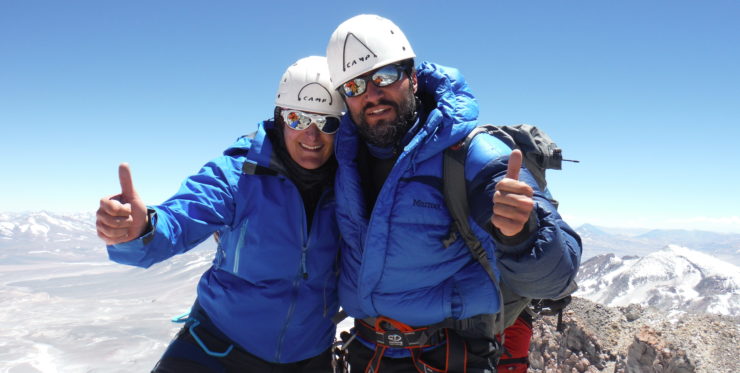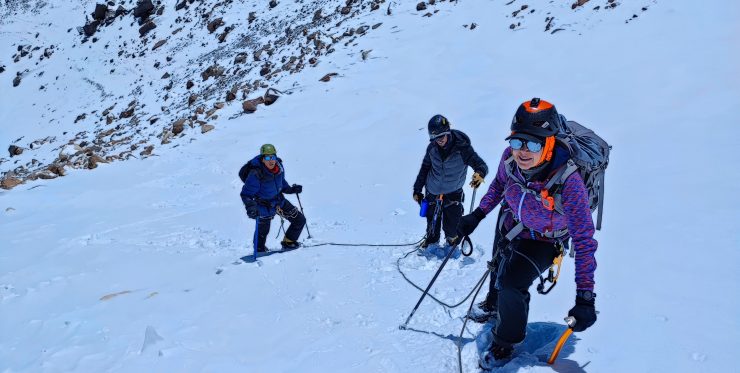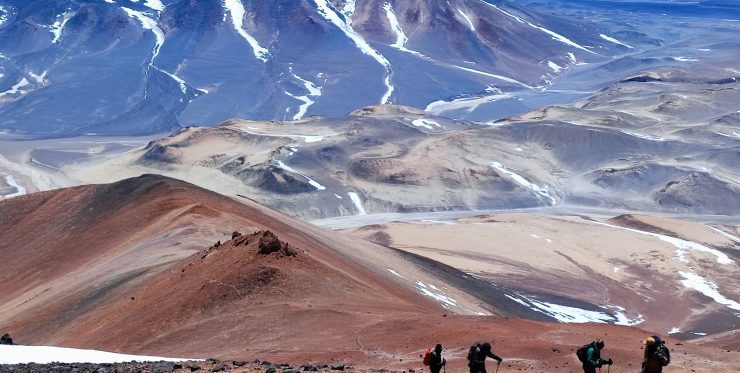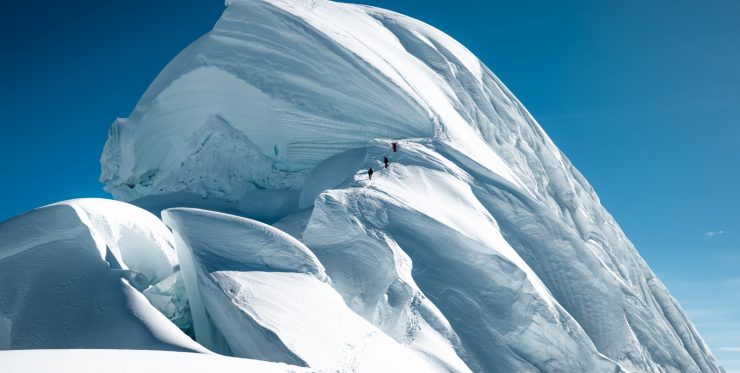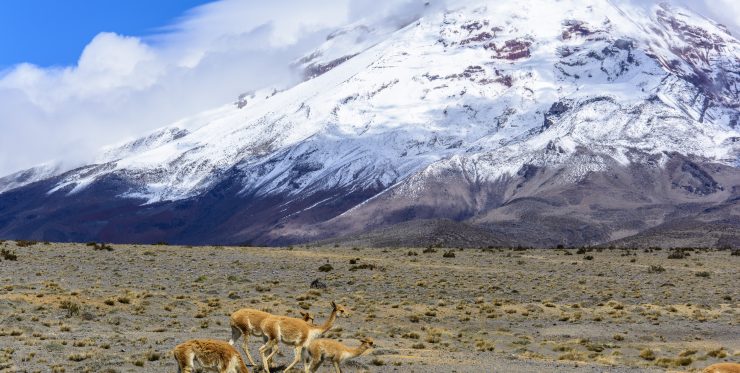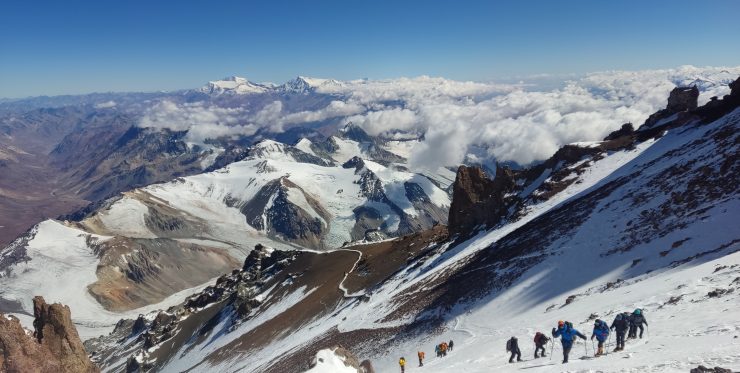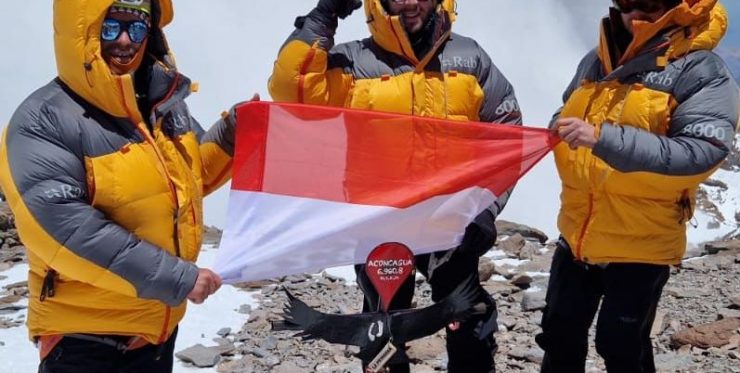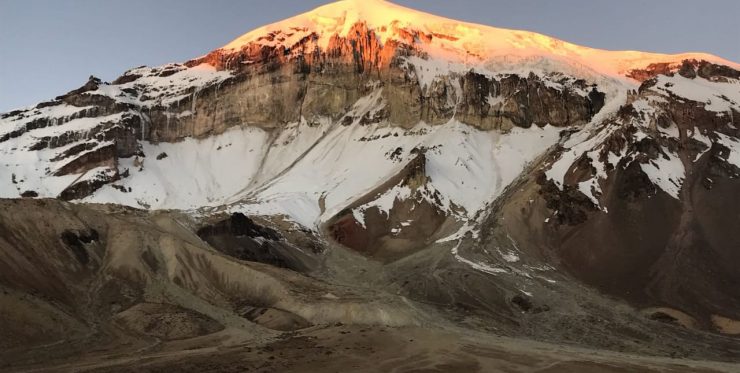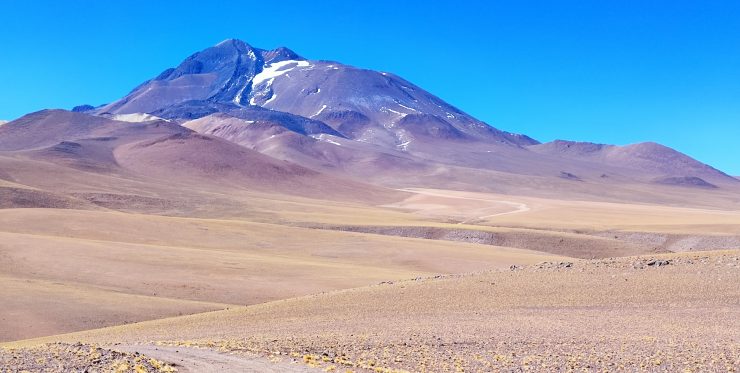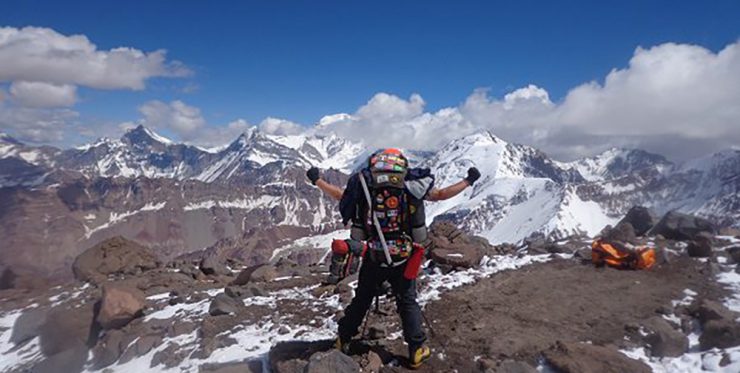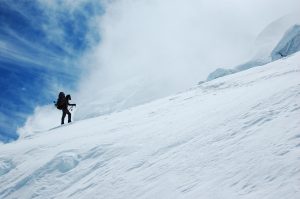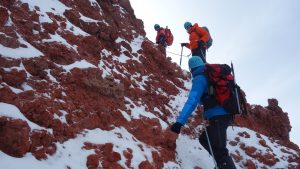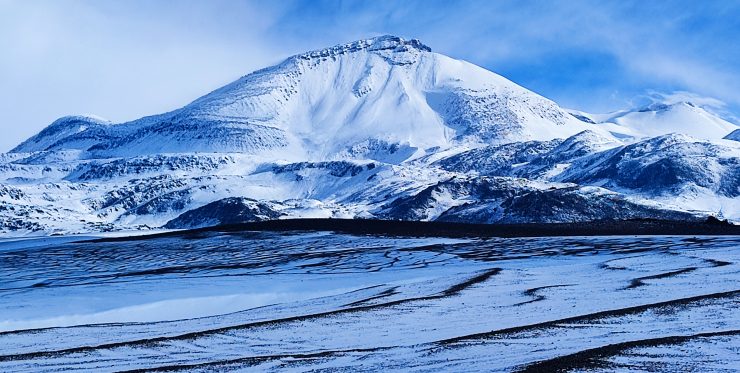
The importance of acclimatization
Mountain expeditions present incomparable challenges which need detailed preparation and a constant attention to different key points to guarantee safety and success. Acclimatization, hydration and sun protection are raised as paramount columns among these. Below, we will explore the importance of each of these elements.
Acclimatization
Acclimatization is the process by which the body gradually adapts to changes in the environment, especially altitude. As we ascend the mountain, atmospheric pressure decreases, which reduces the amount of oxygen available in the air. Without proper acclimatization, there is a risk of suffering altitude sickness, a potentially serious condition that can include symptoms such as headache, nausea, fatigue, and in extreme cases, pulmonary or cerebral edema.
Advantages of Proper Acclimatization:
- Improved Physical Performance: A well-acclimatized body can perform physical activities more efficiently at high altitudes.
- Disease Risk Diminution: It decreases the chance of suffering altitude sickness and other altitude-related illnesses.
- Higher Safety: When the body is allowed to adapt gradually, the risks associated with rapid climbs are reduced and decision making and mental clarity are improved.
Suggestions for acclimatization:
- To ascend slowly and respect the rules of gradual ascent.
- To plan rest days at intermediate altitudes to allow the body to adapt.
- To pay attention to the symptoms of altitude sickness and be prepared to descend if necessary.
- To drink water constantly in small doses that add up to a large amount per day. It is important not to retain liquids.
Hydration
Maintaining a suitable hydration is crucial in any physical activity, but it becomes even more important on mountain expeditions. At high altitudes, the air is drier and the body’s dehydration rate increases due to the quick and deep breathing required to take in enough oxygen. Additionally, intense physical activity and variable weather conditions can contribute to fluid loss.
Advantages of a good hydration:
- Body Temperature Control: It helps maintain adequate body temperature and prevents overheating.
- Performance Optimization: It improves cardiovascular function and muscular capacity, allowing optimal physical performance.
- Prevention of Health Problems: It reduces the risk of cramps, fatigue, and other problems related to dehydration.
Recommendations for Hydration:
- To drink regularly, even if you do not feel thirsty, approximately 3-4 liters of water per day at high altitudes.
- To incorporate electrolytes into your liquid intake to replace minerals lost through sweat.
- To avoid excessive consumption of caffeine and alcohol, as they can contribute to dehydration.
Solar protection
Exposure to ultraviolet (UV) radiation is significantly greater at high altitudes due to the thinner atmosphere that filters less of the sun’s rays. Additionally, snow and ice reflect sunlight, intensifying exposure. Sun protection is vital to prevent damage to the skin and eyes, which can range from sunburn to more serious problems such as skin cancer over time and/or temporary blindness due to snow fall in a short period of time.
Benefits of a proper Sun Protection:
- Sunburn Prevention: It prevents pain and skin damage that can result from prolonged sun exposure.
- Eye Protection: It reduces the risk of temporary blindness due to the effects of snow and other eye conditions related to exposure to UV radiation.
- Long-Term Health: It minimizes the risk of developing chronic problems such as skin cancer.
Recommendations for Sun Protection:
- To use sunscreen with a sun protection factor (SPF) of at least 50, applying it to all exposed areas and reapplying it every two hours ideally.
- To wear sunglasses with UV protection to protect your eyes from radiation and dust.
- To wear appropriate clothing that covers the skin, including hats, caps and long-sleeved clothing.
In conclusion, acclimatization, hydration and sun protection are essential elements for the safety and well-being of mountaineers on mountain expeditions. Paying attention to these aspects not only improves performance and the overall experience, but also protects against serious and life-threatening risks. By integrating these practices into the planning and execution of the expedition, you ensure a safer and more enjoyable adventure in the majestic heights of the mountain.
Don’t hesitate to contact us for your next ascension! At HME we are prepared to guide you and keep you alert of all possible risks in the mountains and how to prevent them. We invite you to constantly read our blog for more articles on safety and mountain expeditions
